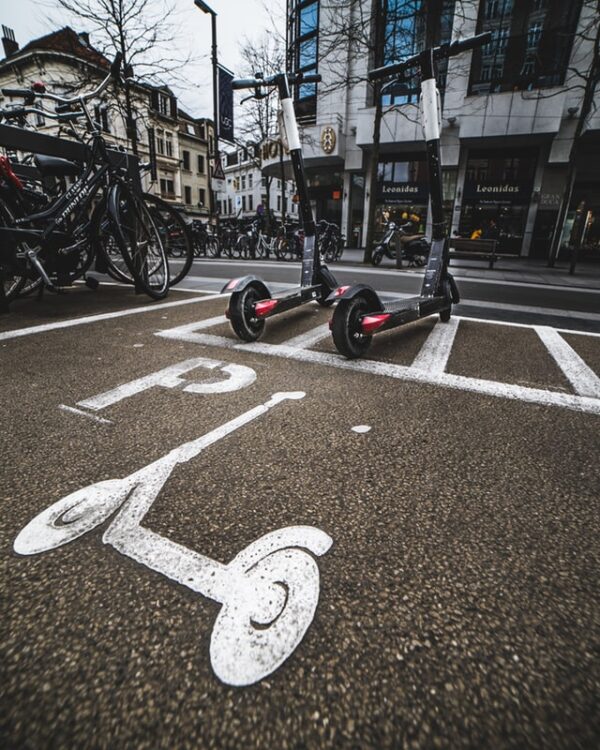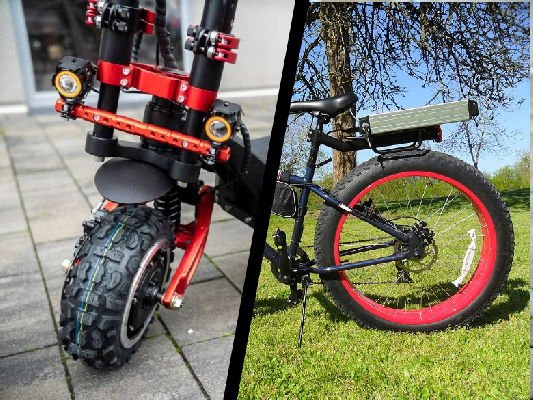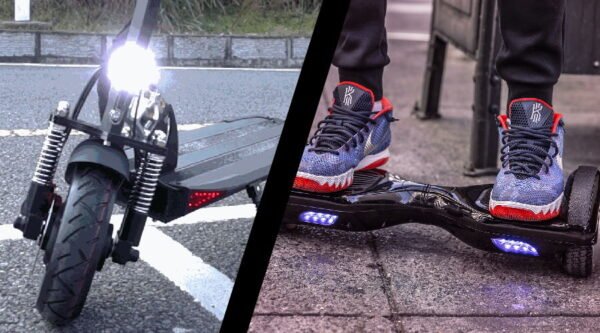
Electric scooters may appear inevitable now, with their rapid global adoption, but the true story is quite different.
The history of electric scooters spans over two centuries and is filled with ups and downs, twists and turns, and the perseverance of progress and innovation.
This story emphasizes the effort it takes for great ideas to become reality and why we shouldn’t take that for granted.
Electric scooter history
This is a complete timeline of the electric scooter.
Before the electric scooter – 1817
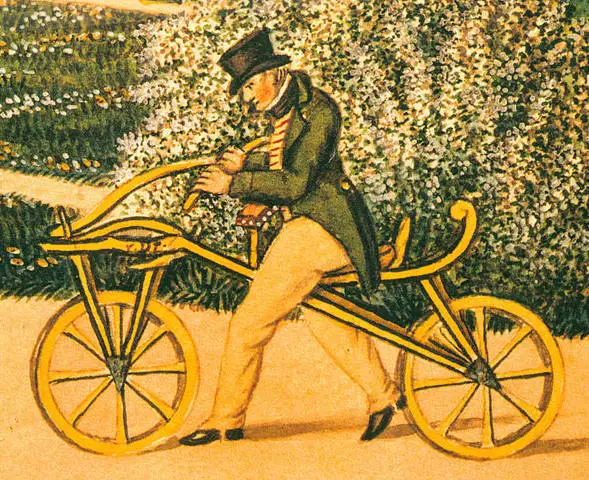
The idea of personal transportation dates back over 200 years. To understand the scooter’s history, we must acknowledge its ancestor, the velocipede.
In 1817, German inventor Karl Freiherr von Drais created the first velocipede. Incidentally, he also invented the earliest typewriter with a keyboard.
Drais aimed to develop a horse-free mode of transport.

Initially, the invention was named the “Laufmaschine,” which translates to “running machine” in German, or simply the “dandy horse.” The first version lacked pedals, requiring riders to use their feet for propulsion. Subsequent versions with two, three, four, and even five wheels emerged, but the two-wheeled velocipede gained the most popularity.
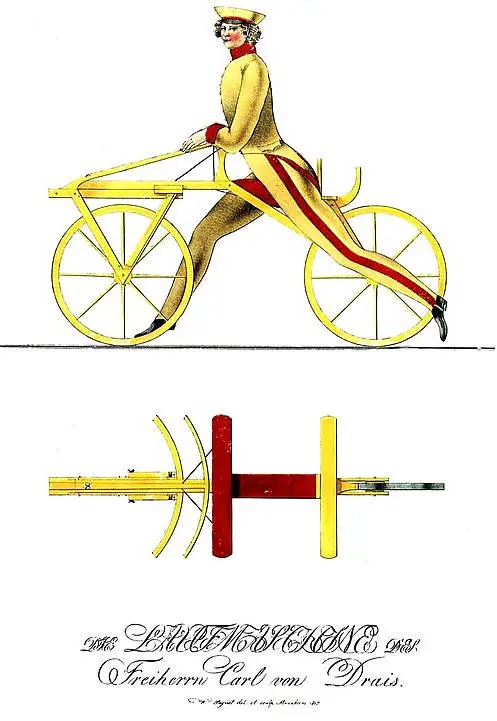
The first bike ride in 1817 covered 4.3 mi / 7 km and lasted an hour in the Mannheim area.
The velocipede idea gained traction, with manufacturers in France and England producing various dandy horse versions, leading to increased popularity.
However, the roads of the time weren’t suitable for the Laufmaschine, so riders began using sidewalks and pedestrian areas, resulting in collisions. German and global authorities subsequently banned this new mode of transport.
That marks the birth of the concept of a two-wheeled personal vehicle, the foundation for bicycles, motorcycles, and, of course, scooters.
The first pedal-driven bicycles – 1857
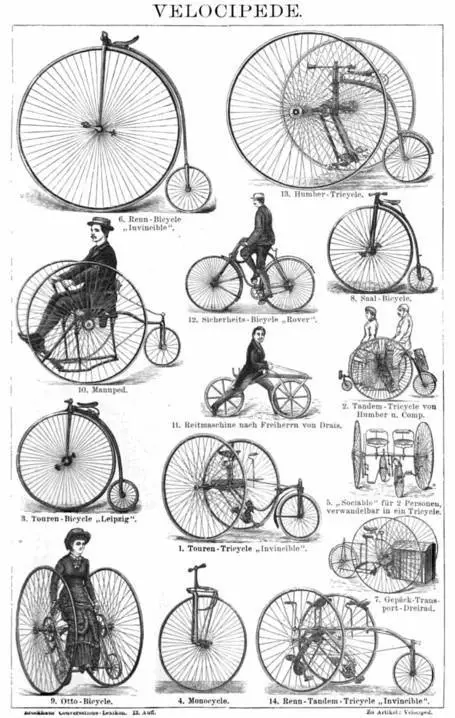
It took several decades for restrictions to ease and for the concept of a personal two-wheeled vehicle to regain popularity. This time, it returned as the pedal-propelled bicycle.
I’m referring to those peculiar bikes with two wheels of different sizes, often seen in black-and-white pictures.
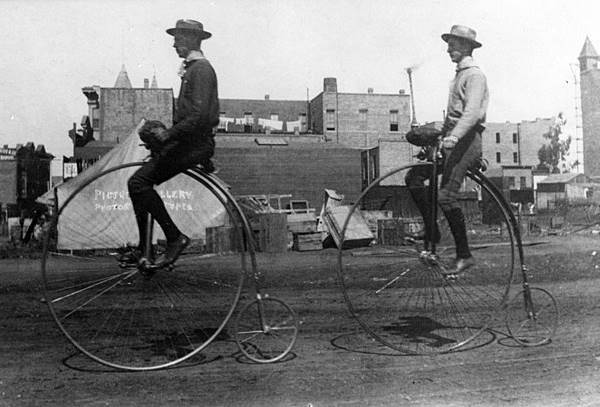
Although it might seem quaint now, the velocipede was a significant innovation in its time, possibly marking the beginning of the electric scooter revolution we see today. Keep in mind that back then, people primarily used horses for transportation.
The Michaux company, founded by Pierre Michaux, Pierre Lallement, and the Olivier brothers, became the first to mass-produce early pedal-driven velocipedes.
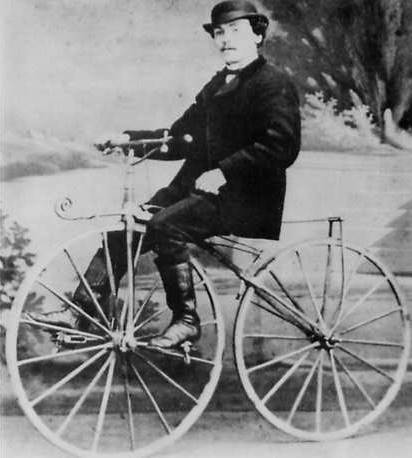
Initially, velocipedes were primarily wooden, but as metallurgy advanced, metal became more prevalent in their construction, eventually leading to the first all-metal velocipede.
Manufacturers recognized that larger wheels improved ride comfort and stability, resulting in the development of the high-wheeler or “penny-farthing” in England. This was the first officially recognized bicycle.
The chain drive – 1886
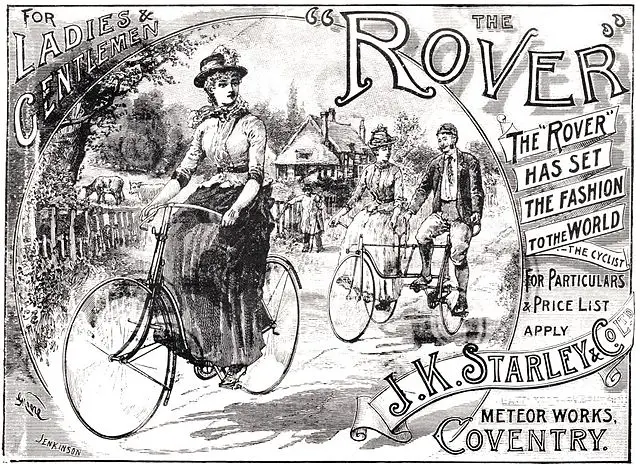
In 1886, Rowley Turner introduced a bicycle to Coventry, England, sparking the interest of his uncle, Josiah Turner, and his business partner, James Starley. They not only decided to produce it but also had innovative ideas for improvement.
Recognizing that the large wheel posed a major problem with unnatural weight distribution and safety concerns, they reduced the wheel diameter and moved the seat rearward.
John Kemp Starley, James Starley’s nephew, made a valuable contribution by introducing a chain between the pedals and the rear wheel. This design change greatly improved the bicycle’s overall design, engineering, and rider efficiency.
The “Coventry model” was born.
This marks the first bicycle model with a concept quite similar to today’s modern bikes.
The pneumatic tire – 1887
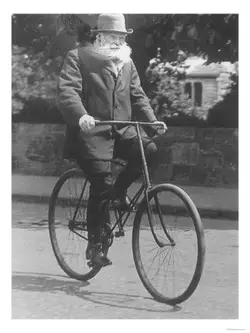
In 1887, Scottish inventor John Boyd Dunlop had a simple goal in mind – to make his son’s tricycle safer, more comfortable, and more fun (his son was actually prescribed frequent tricycle rides as an exercise by his doctor).
He had some knowledge and experience in working with rubber, so he figured that if he fitted an inflated tube of rubber sheet over the wooden wheels, his son could have both a more stable and safer ride.

The pneumatic tire was born.
The first pneumatic tire was initially invented by Robert William Thomson, a Scotsman, but it didn’t gain popularity or go into production.
Thomson and his partners worked on improving the technology through their company, initially called Pneumatic Tyre, later renamed Dunlop Rubber, and then Dunlop Tyres. They also made significant contributions, including sulfur vulcanization, to pneumatic tire technology. However, patent issues posed ongoing challenges. Dunlop claimed he was unaware of the earlier invention when he reinvented it.
Despite these challenges, tire technology continued to progress, benefiting bicycle riders worldwide. Bicycle crazes came and went as people remained fascinated by bikes.
The first battery-powered bicycle – 1895
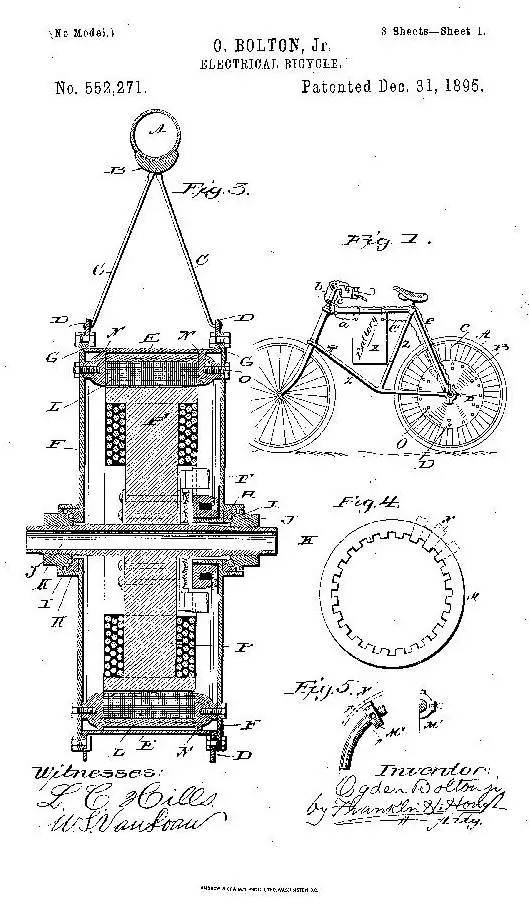
On December 31, 1895, Ogden Bolton Jr. patented the first battery-powered bicycle, featuring a 6-pole brush-and-commutator DC hub motor integrated into the rear wheel, without gears or chains. These terms may already sound familiar to scooter enthusiasts and experts.
Two years later, Hosea W. Libbey took a step further by inventing the first electric bicycle, which included a double electric model. While it didn’t achieve widespread adoption, its design heavily influenced the Giant Lafree nearly 100 years later.
Numerous electric bike patents and reinventions emerged around that time, but none of them gained significant implementation or widespread use. The preference for regular bikes over electric ones remains somewhat mysterious even today.
Nonetheless, the concept of another personal two-wheel transport device was starting to form.
The kick scooter mystery
The story of the electric scooter has a critical missing piece, which may seem counter-intuitive.
Here’s the issue: historical documents mention motorized scooters as early as 1915, if not earlier. However, there’s little mention of the basic frame, stem, deck, and wheels we associate with traditional scooters. This simplicity predates motorized scooters.
Isn’t it odd to think there might have been a regular kick scooter before the motorized version? Yet, the invention date for the kick scooter eludes us. Historical research yields minimal information.
The first motorized scooter – 1915
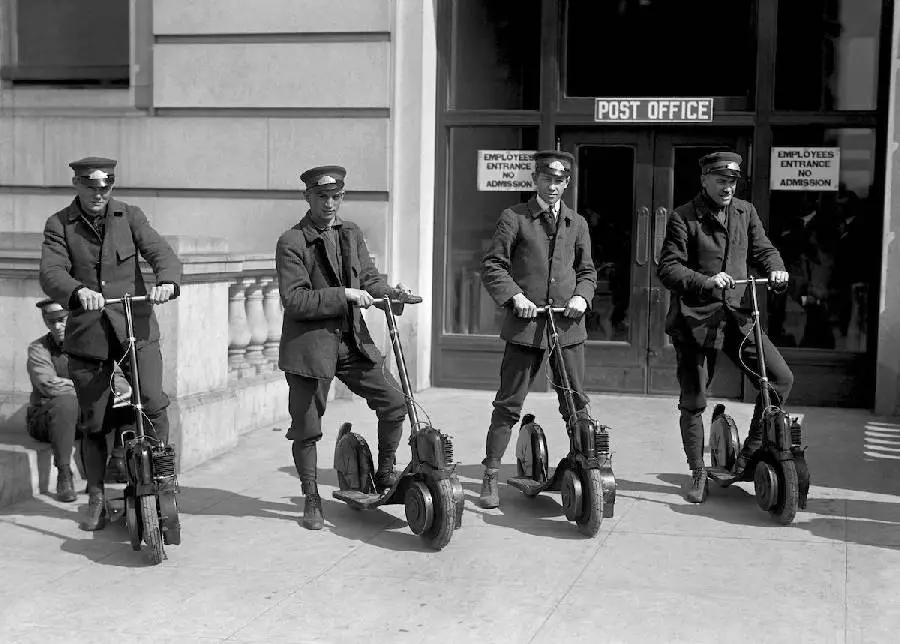
On July 25th, 1916, Arthur Hugo Cecil Gibson was granted a patent for his product the Autoped, which is the first motorized scooter ever.
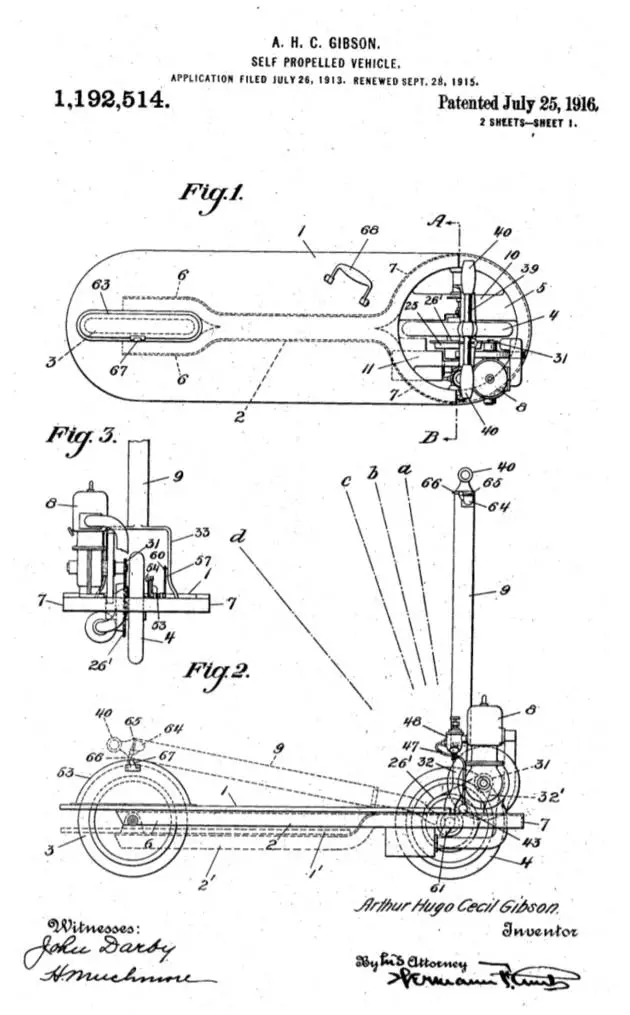
The Autoped, known as a “self-propelled vehicle,” was the first motorized scooter, manufactured in Long Island, New York. Production began in 1915 and ended in 1922.
In those early days, scooter enthusiasts garnered considerable public attention. A few years ago, they made a comeback on the scene, and one can only imagine the experience of riding through the streets of New York during the roaring 20s, amidst the construction of skyscrapers and visible progress at every turn.
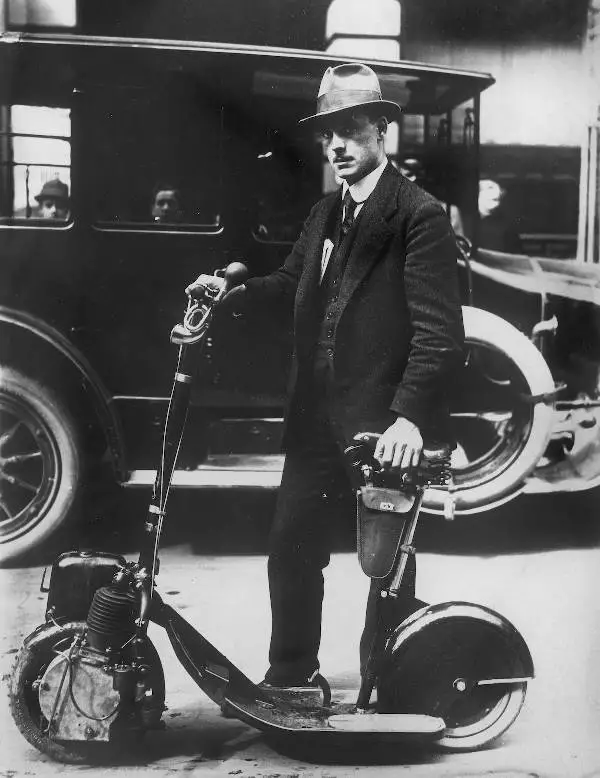
The Autoped was advanced for its time, running on gasoline with an air-cooled engine and a foldable stem for storage. Acceleration was managed with a handlebar lever, and a clutch engaged by pushing the handlebars forward, while pulling them activated the brakes. The scooter also featured both a headlamp and a tail lamp.
Though a luxury for the wealthy, it garnered public attention. Major companies producing motorized scooters had short-lived ventures, leading to the decline of scooters in the public eye.
Cushman Auto-Glide – 1936
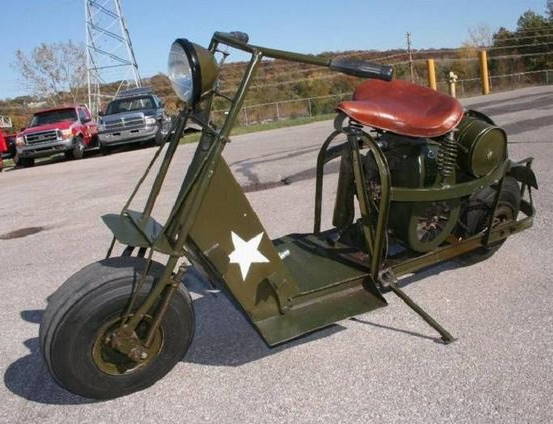
Around 1936, the Cushman company attempted to reintroduce motorized scooters. With experience in motor production and spare engines on hand, they aimed to reignite the scooter craze with the Cushman Auto-Glide.
However, regulatory issues thwarted the reintroduction, much like the earlier days.
Back to bikes – 1965
For several decades, it seemed that scooters had disappeared, except for a few WW2 models, as people returned their focus to bicycles.
From 1965 to about 1975, the US experienced another bike boom, characterized by Time magazine as “the bicycle’s biggest wave of popularity in its 154-year history.” Millions of bikes were produced and sold, with the majority being children’s bikes. Surprisingly, bike sales even outpaced car sales in the early 70s.
However, like history repeating itself, this bike craze eventually waned, and the enthusiasm faded after a decade.
Hybrid electric motorcycle – 1967
One of the first hybrid electric motorcycles, that used both fuel cells and nickel-cadmium batteries, was developed by Austrian chemist and inventor Karl Kordesch in 1967, during his time working for Union Carbide.
Papoose – 1967
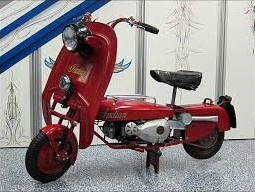
In 1967, under the supervision of Floyd Cramer, a prototype for an electric motorcycle called Papoose was released by the Indian Motorcycle Manufacturing company. This is probably the first time an electric motorcycle that resembles modern electric motorcycles has been released.
The kick scooter reappears – 1974
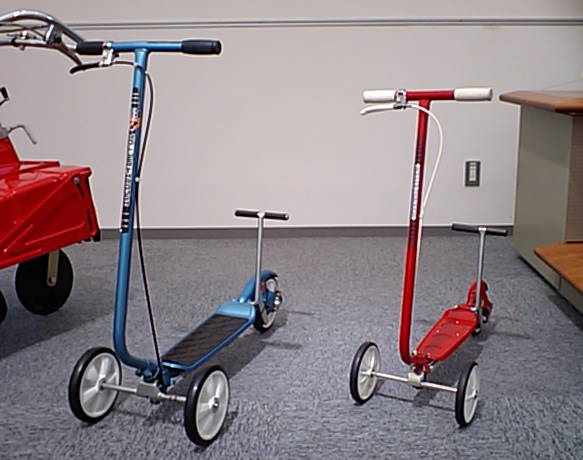
In 1974, Honda, the Japanese car company, introduced the Kick’n Go, a notable early kick scooter for children with three wheels. It aimed to “make skateboarding easier.”
The Kick’n Go gained popularity as a toy, contributing to the perception of electric scooters as toys even after their resurgence in the early 2000s. Several similar models emerged, and the scooter even appeared in TV shows and movies of that era.
However, a single accident led to an extreme reaction, resulting in the scooter’s ban.
The Kickbike – 1994
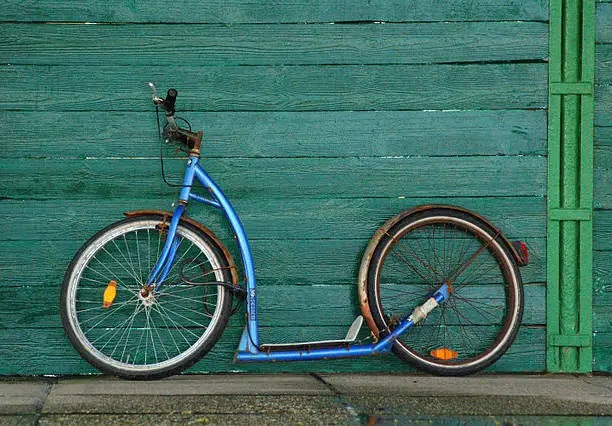
A concept resembling a scooter, known as the Kickbike, originated in Helsinki, Finland, in 1994.
The name conveys its design – a hybrid between a kick scooter and a bike, with an appearance closer to a bike but functioning like a scooter.
Kickbikes were initially developed for summer sled dog training in the Swiss Alps when snow was absent.
Peugeot Scoot’Elec, the modern electric scooter (the other kind) – 1994
In 1994, Peugeot introduced the first mass-produced electric scooter, the Peugeot Scoot’Elec, a small motorcycle/moped-style vehicle.
This model holds historical significance as the first mass-produced unit to run on nickel-cadmium batteries.
While lithium-ion batteries have largely replaced this technology, it marked a crucial milestone in history.
The birth of the modern kick scooter – 1996
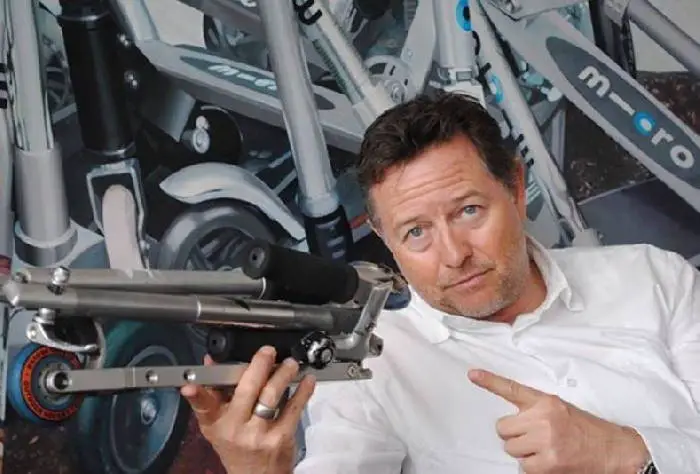
In 1990, in Zurich, Switzerland, Win Ouboter, a Dutch-Swiss banker and tinkerer, had a lightbulb moment when he craved a bratwurst and needed quick, simple, and portable transportation to Sternengrill, not too far for a car but too far for walking.
This is where the modern kick scooter concept likely originated – Ouboter wanted a lightweight, easy-to-use, reliable, safe, and fun mode of transport.
However, the kick scooter didn’t exist yet.
He revisited the idea in 1995, began building prototypes, and in 1996, he established Micro Mobility Systems. The company partnered with Chinese bike manufacturer JD Corp, and by 1999, scooters were being sold in Japan.
This marks the starting point for electric kick scooters as we know them today, catching many by surprise.
Micro vs Razor beef – 2000
Win Ouboter faced a challenge with Micro scooters as they were easy for competitors to copy, leading to numerous imitators. Compounding this, their manufacturing partner, JD Corp, produced a replica called the JD Razor, initially intended for Asia but soon flooding the European market, competing directly with Micro.
JD’s tactics gave them an advantage in the children’s scooter market, which Win Ouboter saw as more than just toys for kids. While Micro scooters remain in the market today and are well-known, they likely deserve greater recognition.
The future arrives… on a Segway – 2001
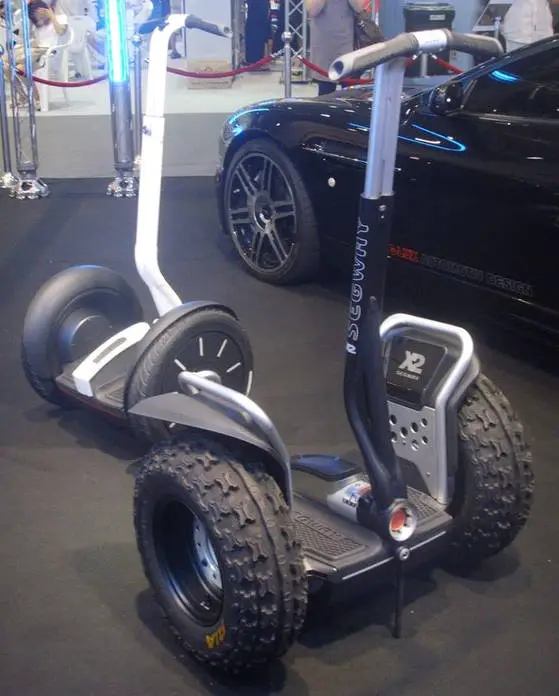
It’s challenging to identify the precise starting point of the electric kick scooter revolution. Perhaps the most significant moment was the introduction of the first Segway model in 2001.
Although the Segway isn’t technically an electric kick scooter, it shares many similarities and, most importantly, the crucial ones:
- two wheeled device
- for transporting a single person
- has a deck
- has a stem with handlebars
- runs on electric batteries
- instantly becomes popular
- looks a bit nerdy
The Segway, while not the first electric kick scooter, can be considered its predecessor. It played a significant role in demonstrating a strong demand for battery-powered personal transport vehicles.
In 2015, Ninebot acquired the company with funding from Xiaomi. Today, Segway Ninebot stands out as one of the most successful electric scooter lines.
Although the Segway generated significant attention, its design and concept were ahead of their time. It remained a niche product primarily used by mall guards and enthusiasts, failing to achieve widespread financial success like modern electric scooters.
The first Razor electric scooter for kids – 2003
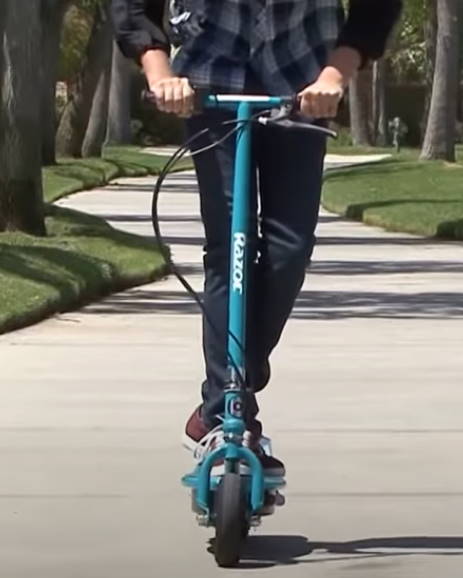
Following the success of traditional kick scooters, Razor introduced their first kids’ electric scooter in 2003.
These scooters quickly gained popularity and continue to do so today. Remarkably, Razor has maintained its dominance in the children’s scooter market for over two decades, firmly establishing the image of electric scooters as primarily for kids.
While Razor enjoyed immense success with electric scooters for kids in the early 2000s, the idea of creating a similar product for adults wasn’t on anyone’s radar.
We are getting there – 2013
A decade after the Segway’s ups and downs and the growth of Razor electric scooters, it appeared that no one had recognized the potential of electric scooters for adults.
But then, lightweight, portable, foldable electric kick scooters with lithium batteries and BLDC hub motors in their wheels began appearing in the market.
The big bang of the Xiaomi M365 – 2016
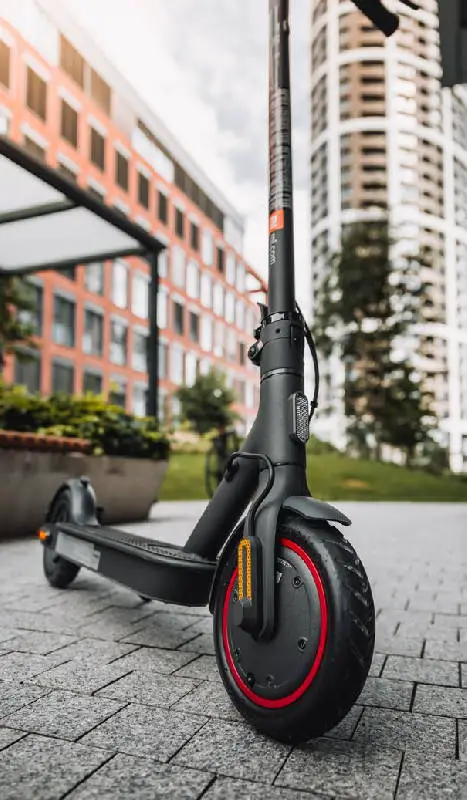
In December 2016, Xiaomi, a Chinese tech and consumer electronics company, introduced an electric scooter featuring a lithium-ion battery, a front wheel hub motor, a top speed of 15.5 mph (25 km/h), and a range of 18.6 miles (30 km) per battery charge.
This model, known as the Xiaomi M365, gained instant popularity, and its rise to fame in the scooter world was swift. Despite some drawbacks like vulnerability to flat tires, the Xiaomi M365 continues to dominate the electric scooter market to this day.
Bird, Lime, and ride-sharing scooters – 2017
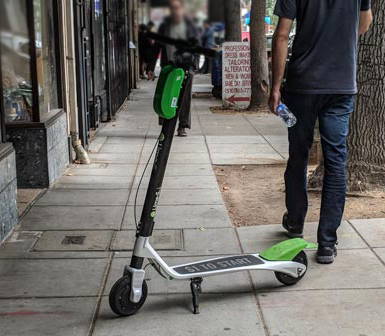
On September 1st, 2017, Bird, a ride-sharing and transportation company, was founded in Santa Monica, California, by Travis VanderZanden, a former executive at Lyft and Uber.
Within a year of its launch, Bird celebrated its 10 millionth scooter ride.
Shortly after, Lime, another transportation startup initially focused on ride-sharing bicycles, recognized the potential of electric scooters and introduced its scooter-sharing program in February 2018.
Both startups launched scooter rental programs in numerous major cities worldwide, saturating the streets with scooters.
The popularity of electric scooters grew rapidly, with millions of people trying them and many eventually buying their own. This craze has continued to expand ever since.
The scooter wars – 2018

Manufacturers of various scooters emerged. The Xiaomi M365 became a highly profitable consumer electronics product, inspiring numerous imitators. Some didn’t even attempt to conceal their copying.
Electric scooter issues remained common but were steadily addressed with each new model iteration. Some brands had been around for over half a decade, perfecting their scooters to eliminate typical problems from previous generations.
Lime and Bird engaged in intense battles for market dominance in every city.
However, authorities and some citizens expressed concerns about the scooter craze. The rapid, disruptive entry of ride-sharing startups into cities left questions about scooter parking responsibility and proper etiquette.
Coupled with accidents, injuries, and fatalities, several cities banned electric scooters until they could establish adequate regulations, with London serving as a notable example.
Nevertheless, the electric scooter revolution continued unabated, with the period marked as the “scooter wars” due to substantial investments in ride-sharing companies and mixed public reactions. There seemed to be no end in sight to this phenomenon.
Electric scooters shine in the moments of crisis – 2020
Amid challenging times, electric scooters emerged as a standout, offering a personal and hygienic mode of transport. Purchasing one’s own scooter became a popular choice over ride-sharing options.
During the pandemic, it became evident that people needed a private, safe mode of transport, and scooters fit the bill perfectly. Public transport and shared rides lost favor as concerns about disease transmission grew.
The new world – 2023

After a period of growth, investments, and innovation, electric scooters have become a part of our lives.
Ride-sharing companies compete mainly for tourists and beginners, as many people opt to buy their own scooters due to cost-effectiveness.
There are over 300 adult and numerous children’s scooter models from various companies, with frequent updates improving quality and addressing previous issues.
With a wide range of options and competitive pricing, electric scooters have found a place in everyday life.


